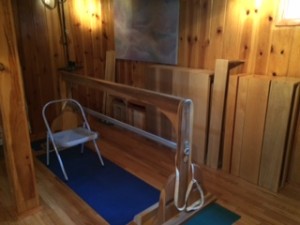During the winter months when I have fewer options for cooking from my summer garden, I look for ways to use the few remaining Butternut squash. The squash were particularly sweet this year. They grew in the newly sheet composted bed in the back of the garden. Some I planted and some came up from the unfinished composted material from the compost barrel. Even though they were not large the extraordinary flavor made up for the small size of most of them. Probably they didn’t get enough sun as they crawled around and through the tomato plants. I like having the smaller ones since they are about the right size for creating a dish that serves two. I have saved some of the seeds from one of the nicest small ones to see if I can grow more small ones.
One of the recipes I created for the squash was to expand on a dish that my mother and grandmother used to make, fried apples. To make this recipe you simple fry apples in butter and add a little honey at the end. Here’s the recipe.
3 Cups sliced Butternut squash (about 1/4 inch thick),2 Granny Smith apples, sliced, 1 Bosc pear sliced, about 1/4 teaspoon salt, 1 1/2 to 2 tablespoons butter, 1 tablespoon maple syrup, fresh ginger to taste, 12 cup chopped walnuts and or pecans. If you use organic apples and pears, you will not need to peel them. Melt the butter in a skillet and add squash. Cook squash for about ten minutes before adding the apple and pear and ginger. Add the maple syrup and chopped nuts near the end of cooking. It’s done when the apples and pear are tender. I used Bosc pear because it is firmer and holds its shape better. If you want to make the dish vegan substitute coconut oil for the butter. This recipe serves 6.


